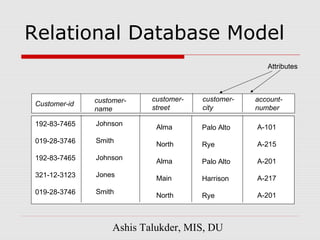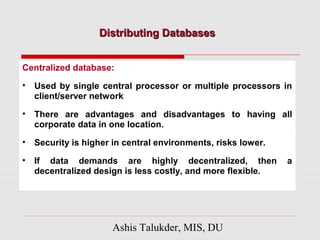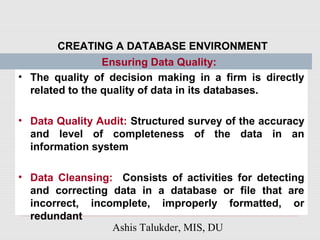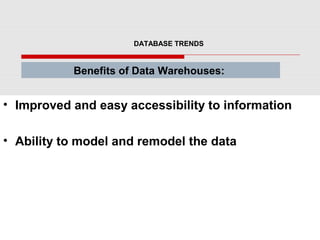The lecture by Ashis Talukder discusses the fundamentals of database systems, including traditional file management, data organization, and the significance of database management systems (DBMS). It highlights the purposes of databases, the importance of data integrity, the roles of database users, and key components such as data definition and manipulation languages. Additionally, it covers various database architectures, transaction management, and the impact of data quality on decision-making.


















































